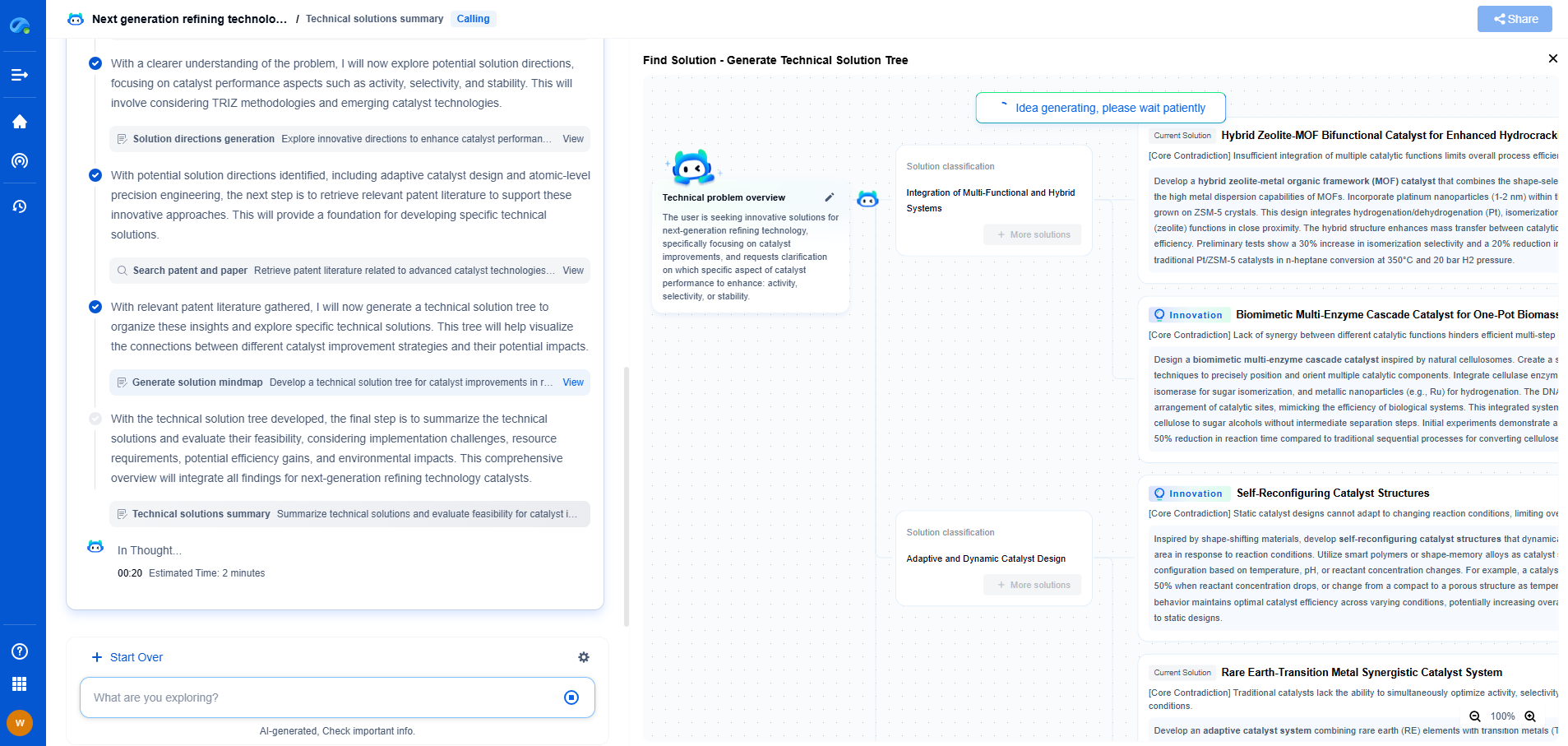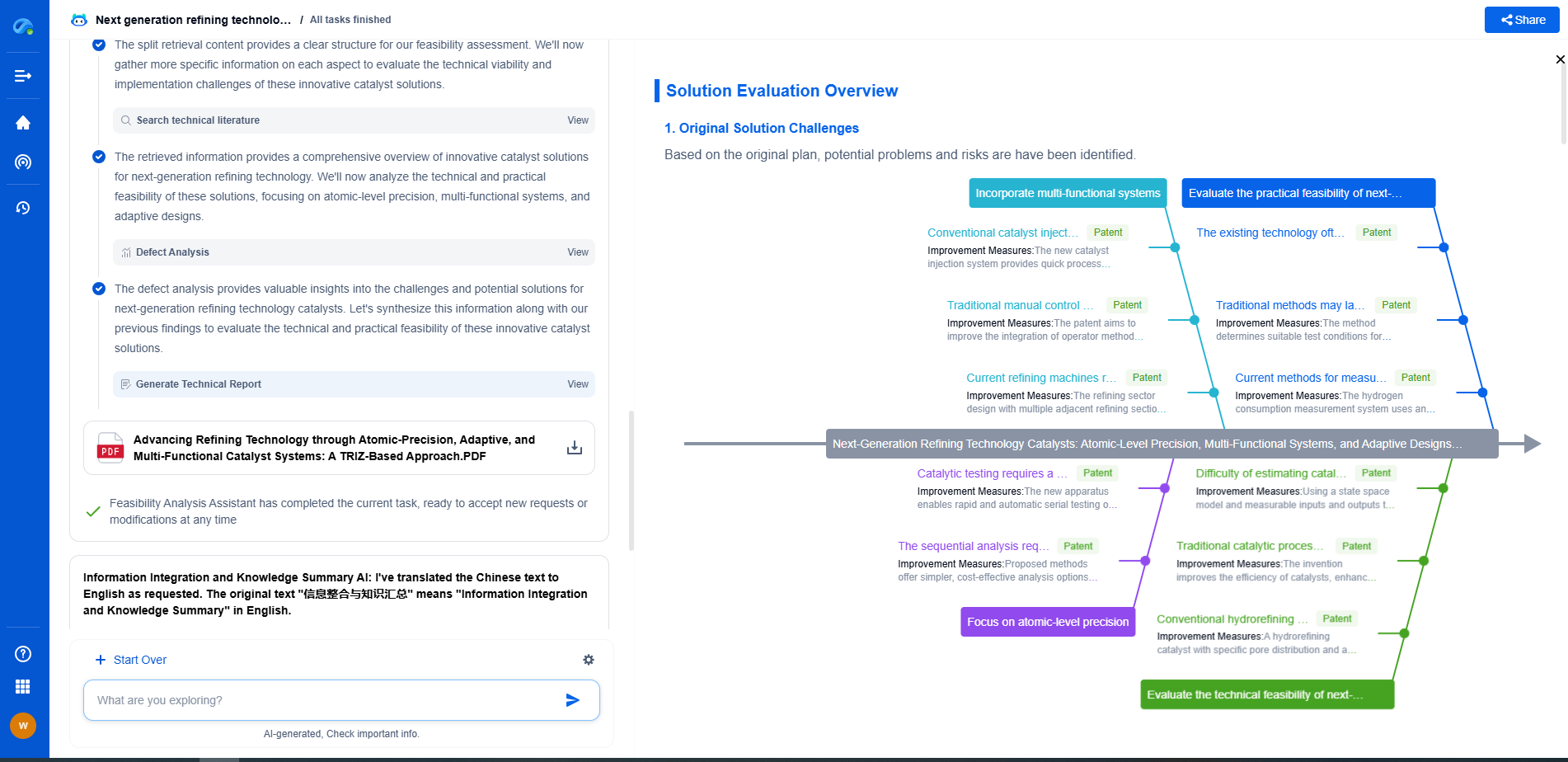What Is NVH Testing in Automobiles? Basics of Noise, Vibration, and Harshness
JUL 16, 2025 |
Noise, Vibration, and Harshness, commonly abbreviated as NVH, is a critical aspect of automotive design and engineering. NVH testing is essential to understand how a vehicle interacts with its environment and how it is perceived by its occupants. This process involves assessing the sound and vibration characteristics of a vehicle to ensure comfort, performance, and safety. In this blog, we'll delve into the fundamentals of NVH testing, exploring its importance and the methods used to evaluate these characteristics in automobiles.
Understanding NVH
NVH encompasses the sounds and sensations that passengers feel inside a vehicle. Each component plays a significant role in the overall driving experience:
1. Noise: This refers to unwanted sounds generated by a vehicle, including engine noise, tire noise, wind noise, and sounds from the road. Reducing noise is essential to provide a comfortable and quiet cabin environment.
2. Vibration: This aspect relates to the oscillations felt by occupants due to the vehicle's engine, suspension, or road inputs. Minimizing vibrations is crucial to enhance ride comfort and vehicle durability.
3. Harshness: This term describes the roughness or severity of the ride felt by passengers. It combines elements of noise and vibration, contributing to the overall perception of vehicle quality.
The Importance of NVH Testing
NVH testing is vital for several reasons. It not only enhances passenger comfort but also affects the vehicle's marketability and brand image. Here are a few reasons why NVH testing is crucial:
1. Passenger Comfort: A quiet and smooth ride is essential for passenger satisfaction. High levels of noise and vibration can lead to discomfort and fatigue, detracting from the overall driving experience.
2. Vehicle Performance: NVH characteristics can impact the performance of a vehicle. Excessive noise and vibrations may indicate underlying mechanical issues that could affect a vehicle's efficiency and longevity.
3. Safety: Certain NVH issues can have safety implications. For instance, excessive steering wheel vibrations might lead to driver fatigue or a loss of control in extreme cases.
4. Competitive Advantage: Automakers strive to differentiate their products in a competitive market. A well-engineered NVH profile can be a significant selling point, enhancing a brand's reputation for quality and comfort.
Methods of NVH Testing
NVH testing involves various methods to measure and analyze noise, vibration, and harshness in vehicles. Some common techniques include:
1. Sound Pressure Level (SPL) Measurement: This method uses microphones to measure sound levels at different points within the vehicle cabin. It helps identify sources of noise and evaluate their impact on passenger comfort.
2. Vibration Analysis: Sensors are placed on different vehicle components to measure vibrations. This data helps engineers understand how vibrations propagate through a vehicle and identify areas for improvement.
3. Modal Analysis: This technique involves studying the dynamic response of a vehicle or its components to understand how they behave under different conditions. It helps in identifying resonant frequencies that could lead to increased noise and vibration.
4. Road Testing: Real-world testing on different road surfaces provides valuable insights into how a vehicle performs in various conditions. This helps engineers fine-tune NVH characteristics to match real-life scenarios.
5. Computer Simulations: Advanced modeling techniques allow engineers to simulate NVH behavior in virtual environments. This approach is often used in the early stages of vehicle development to predict NVH performance and make necessary adjustments before physical prototypes are built.
Improving NVH in Automobiles
Improving NVH characteristics requires a holistic approach. Automakers often incorporate several strategies to achieve an acceptable NVH profile:
1. Material Selection: Using sound-absorbing materials and vibration-damping components can significantly reduce noise and vibration levels.
2. Structural Design: Optimizing the design of vehicle components and their connections can help minimize resonances and improve overall NVH performance.
3. Isolation Techniques: Implementing isolation methods, such as rubber bushings and mounts, can prevent vibrations from transmitting through the vehicle structure.
4. Aerodynamic Design: Streamlining the vehicle's shape can reduce wind noise, enhancing the quietness of the cabin.
5. Regular Maintenance: Ensuring that vehicle components are in good condition can prevent NVH issues from arising due to wear and tear.
Conclusion
NVH testing is a fundamental aspect of automotive engineering that directly impacts passenger comfort, vehicle performance, and brand reputation. By understanding the basics of noise, vibration, and harshness, and employing advanced testing methods, automakers can deliver vehicles that offer a smoother, quieter, and more enjoyable driving experience. As technology advances, the field of NVH testing continues to evolve, providing ever-improving solutions to meet the demands of modern drivers.
In the world of vibration damping, structural health monitoring, and acoustic noise suppression, staying ahead requires more than intuition—it demands constant awareness of material innovations, sensor architectures, and IP trends across mechanical, automotive, aerospace, and building acoustics.
Patsnap Eureka, our intelligent AI assistant built for R&D professionals in high-tech sectors, empowers you with real-time expert-level analysis, technology roadmap exploration, and strategic mapping of core patents—all within a seamless, user-friendly interface.
⚙️ Bring Eureka into your vibration intelligence workflow—and reduce guesswork in your R&D pipeline. Start your free experience today.
- R&D
- Intellectual Property
- Life Sciences
- Materials
- Tech Scout
- Unparalleled Data Quality
- Higher Quality Content
- 60% Fewer Hallucinations
Browse by: Latest US Patents, China's latest patents, Technical Efficacy Thesaurus, Application Domain, Technology Topic, Popular Technical Reports.
© 2025 PatSnap. All rights reserved.Legal|Privacy policy|Modern Slavery Act Transparency Statement|Sitemap|About US| Contact US: help@patsnap.com

